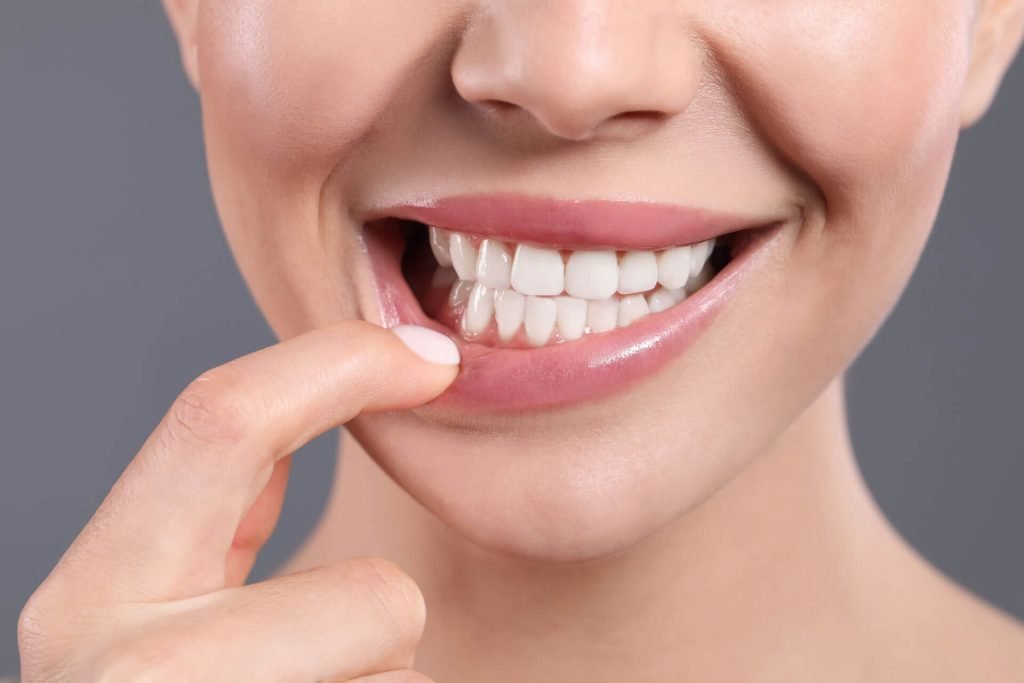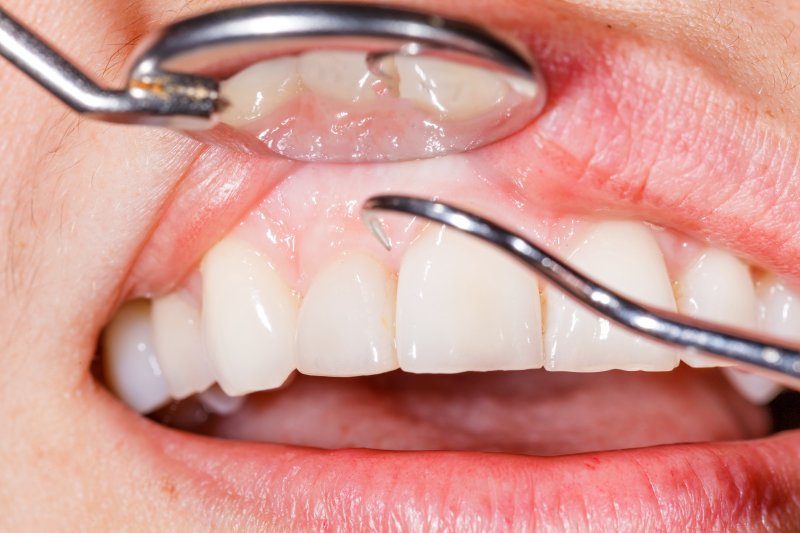Are you feeling the unsettling wiggle of a loose tooth? It’s as if your smile is playing a little game of hide-and-seek, causing a sense of unease. But fear not, because I’m here to guide you on how to tighten a loose tooth at home right in the comfort of your own home.
Maintaining good oral hygiene is key to keeping your teeth strong and healthy. By gently brushing and flossing daily, you’ll give your teeth the care they deserve. Adding a saltwater rinse to your routine can also help tighten that loose tooth.
If you’re experiencing discomfort, applying a cold compress can provide relief while encouraging stability in your tooth. And remember, avoiding sticky or hard foods will prevent further loosening.
For those seeking natural remedies, clove oil has been known for its soothing properties when applied directly to the affected area. Additionally, using tea tree oil mouthwash can aid in tightening the loose tooth.
But if all else fails and you still find yourself wobbling about with that troublesome tooth, it may be time to seek professional dental care. Your dentist can offer solutions such as dental implants or orthodontic treatment to restore stability and bring back that confident smile.
So don’t fret! With these techniques at hand, you’ll be well on your way to tightening that loose tooth and reclaiming your place among those with radiant smiles.

Maintaining Good Oral Hygiene
It’s crucial to consistently brush and floss your teeth in order to maintain good oral hygiene. By doing so, you can prevent plaque buildup, which is a major cause of gum disease. Make sure to brush at least twice a day using fluoride toothpaste and a soft-bristled toothbrush. Don’t forget to gently clean your tongue as well. Flossing should be done once a day, ensuring that you reach all the tight spaces between your teeth. Additionally, maintaining regular dental check-ups is essential for keeping your teeth healthy and catching any potential problems early on. Your dentist will be able to detect signs of gum disease or any other issues that may contribute to loose teeth. Remember, taking care of your oral health not only helps tighten loose teeth but also promotes overall well-being and confidence in your smile.
Gently Brushing and Flossing
Begin by delicately brushing and flossing your teeth to ensure optimal oral hygiene. When it comes to brushing, use a soft-bristled toothbrush and a gentle circular motion. Be sure to cover all surfaces of your teeth, including the front, back, and chewing surfaces. Pay extra attention to where your loose tooth is located, but be careful not to apply too much pressure that could further loosen it. Additionally, using flossing tools like dental picks or interdental brushes can help remove plaque and food particles from hard-to-reach areas between teeth. Gently glide the floss or pick between each tooth and along the gumline, making sure not to force it or snap it against your gums. By incorporating these proper brushing techniques and flossing tools into your routine, you can maintain good oral hygiene while being mindful of your loose tooth.

Using a Saltwater Rinse
To enhance your oral care routine, try using a saltwater rinse that will leave your mouth feeling refreshed and rejuvenated. Incorporating a saltwater rinse into your daily routine can provide numerous benefits for your dental health. The natural antibacterial properties of salt help to kill harmful bacteria in your mouth, reducing the risk of infection and inflammation. Additionally, the rinse helps to soothe irritated gums and promote healing. Making a saltwater rinse is simple: just dissolve half a teaspoon of salt in eight ounces of warm water. Swish the mixture around your mouth for about 30 seconds before spitting it out. Remember not to swallow the solution! By adding this easy step to your oral care routine, you are taking an active role in maintaining healthy teeth and gums.
Applying a Cold Compress
Get immediate relief from oral pain by applying a cold compress to the affected area. It’s a simple and effective way to reduce inflammation and numb the area, providing temporary relief until you can see a dentist. Here are four benefits of using a cold compress for toothache:
- Reduces swelling: Applying a cold compress helps constrict blood vessels, reducing inflammation and swelling around the loose tooth.
- Numbs the area: The cold temperature helps numb the nerves in your mouth, temporarily relieving pain associated with a loose tooth.
- Easy to make at home: You can easily make a cold compress at home by wrapping ice cubes or frozen vegetables in a thin cloth or towel.
- Alternative remedy: Using a cold compress is an alternative remedy for toothache that doesn’t involve medication, making it an appealing option for those who prefer natural solutions.
Try using a cold compress along with other alternative toothache remedies to find what works best for you. Remember, it’s important to consult with a dentist if you have persistent or severe tooth pain.
Avoiding Sticky or Hard Foods
One effective way to spare your teeth from unnecessary stress is by steering clear of sticky or hard foods. Avoiding these types of foods can help prevent further damage to a loose tooth and promote its healing process. Sticky foods such as caramel, taffy, or chewing gum can pull on the tooth and worsen its looseness. Similarly, hard foods like nuts, ice cubes, or hard candies can put additional pressure on the tooth and potentially cause it to become even looser. It’s important to be mindful of what you eat during this time to allow the tooth to tighten naturally. In addition to avoiding sticky or hard foods, there are alternative treatment options available that may help with a loose tooth. Consulting a dentist for professional advice is recommended in order to determine the best course of action for your specific situation.

Using a Stabilizer How To Tighten A Loose Tooth At Home
Now that you know how to avoid sticky or hard foods to protect your loose tooth, let’s explore another method to help tighten it at home. One effective option is using a tooth splint or stabilizer. These are alternatives that can provide support and stability for your loose tooth, helping it stay in place while it heals. DIY tooth stabilizers can be made using various materials such as dental floss, orthodontic wax, or even a small piece of gauze. By creating a splint or stabilizer and securing it gently around the loose tooth and adjacent teeth, you can help reduce movement and promote healing. Remember to consult with your dentist before attempting this method to ensure it is appropriate for your situation.
Trying Toothpaste for Sensitive Teeth
Using toothpaste specifically designed for sensitive teeth can provide instant relief and make enjoying your favorite foods a pain-free experience. If you’re looking for toothpaste alternatives or natural remedies to tighten a loose tooth, consider trying toothpaste for sensitive teeth. These toothpastes contain ingredients like potassium nitrate or stannous fluoride that help reduce sensitivity and strengthen the enamel of your teeth. By using this type of toothpaste regularly, you may find that your loose tooth becomes more stable over time. Remember to brush gently with a soft-bristled brush to avoid causing further damage. Additionally, maintaining good oral hygiene practices such as regular brushing and flossing will also contribute to the overall health of your teeth and gums. Give it a try and see if this simple solution helps tighten your loose tooth!

Applying Clove Oil
Applying clove oil to your teeth can provide a natural and soothing remedy for tooth sensitivity, allowing you to enjoy your favorite foods without discomfort. Clove oil has been used for centuries due to its numerous benefits. It contains eugenol, which acts as a natural anesthetic and anti-inflammatory agent, providing relief from tooth pain. Simply apply a small amount of clove oil directly onto the affected tooth using a cotton swab or your clean finger. Gently massage it into the area for a few minutes. You can repeat this process up to three times a day, but be cautious not to use too much as it may cause irritation. If you don’t have clove oil on hand, there are alternatives such as applying a cold compress or using over-the-counter numbing gels specifically made for sensitive teeth.
Using Tea Tree Oil Mouthwash
To freshen your breath and promote oral health, try incorporating tea tree oil mouthwash into your daily routine. Tea tree oil has numerous benefits for your teeth and gums. It is known for its natural antiseptic properties, which can help kill bacteria in the mouth that can cause bad breath and dental problems. Using tea tree oil mouthwash regularly can also reduce inflammation and soothe irritated gums. Additionally, tea tree oil has been found to be effective in preventing plaque buildup and fighting gum disease. If you’re looking for alternative mouthwash options, consider using a mixture of water and hydrogen peroxide or a saltwater rinse. Both of these alternatives can help maintain oral hygiene while providing additional benefits for your teeth and gums.

Seeking Professional Dental Care
Now that you have tried using Tea Tree Oil Mouthwash to tighten your loose tooth, it is important to seek professional dental care. A professional dental check-up is crucial for maintaining good oral health and addressing any underlying issues causing your loose tooth. Regular dental visits offer a range of benefits that can help you avoid further complications.
Here are two important reasons why you should prioritize regular dental visits:
- Early Detection: Dentists are trained to identify oral health problems at their earliest stages, including gum disease or infections that may be contributing to your loose tooth. By catching these issues early on, you can prevent them from worsening and potentially save your tooth.
- Professional Treatment: Seeking professional dental care allows dentists to provide targeted treatment options tailored to your specific needs. They will be able to recommend the most effective methods for tightening your loose tooth and preventing future problems.
By scheduling a professional dental check-up, you take proactive steps towards resolving your loose tooth and ensuring long-term oral health.
Considering Dental Implants or Orthodontic Treatment
Once you prioritize regular dental visits, a world of possibilities opens up for considering dental implants or orthodontic treatment to address any issues with your teeth. Dental implants and braces are two popular options that can help correct misaligned teeth or replace missing ones. Dental implants are artificial tooth roots that are surgically placed into the jawbone, providing a strong foundation for replacement teeth. They offer a permanent solution and look and function like natural teeth. On the other hand, braces use brackets and wires to gradually shift teeth into their proper position over time. While braces may take longer to achieve desired results, they are often more affordable than dental implants. It is important to consult with your dentist or orthodontist to discuss the pros and cons of each option before making a decision that best suits your needs.

Frequently Asked Questions
Can I use any type of toothpaste for sensitive teeth or are there specific brands I should look for?
To treat sensitive teeth at home, look for toothpaste brands specifically designed for sensitive teeth. These brands usually contain ingredients like potassium nitrate or strontium chloride that help relieve sensitivity. Opt for trusted brands recommended by dentists for the best results.
Is it safe to use a tooth splint or stabilizer without consulting a dentist first?
It’s not safe to use a tooth splint or stabilizer without consulting a dentist first. Instead, try home remedies like using toothpaste for sensitive teeth and applying clove oil occasionally. Consider alternatives to dental implants and orthodontic treatment, such as mouthwash alternatives.
How often should I apply clove oil to my loose tooth?
To use clove oil for dental care, apply a small amount directly to your loose tooth using a cotton swab. The benefits of clove oil include its analgesic and antibacterial properties, which can help alleviate pain and prevent infection.
Can I use regular mouthwash instead of tea tree oil mouthwash for my loose tooth?
You can definitely use regular mouthwash as an alternative to tea tree oil mouthwash for your loose tooth. However, it’s important to note that there are other alternative remedies you can try at home to prevent a loose tooth from getting worse.
Are dental implants or orthodontic treatment the only options for a loose tooth, or are there other alternatives available?
Home remedies and natural alternatives can help tighten a loose tooth. Options include oil pulling, saltwater rinses, and using aloe vera gel. These methods may provide relief and promote tooth stability without requiring dental implants or orthodontic treatment.
Click here to read more info
https://www.nidcr.nih.gov/health-info/gum-disease
https://www.cdc.gov/niosh/topics/hydrogen-peroxide/default.html
Culmination
In conclusion, taking care how to tighten a loose tooth at home requires a combination of proper oral hygiene and natural remedies. By maintaining good oral hygiene habits such as gentle brushing and flossing, you can prevent further loosening of the tooth. Additionally, using a saltwater rinse or applying a cold compress can provide temporary relief. However, it is important to remember that these home remedies may not be enough in severe cases. Seeking professional dental care is crucial for long-term solutions such as dental implants or orthodontic treatment. Remember, your dental health is worth investing in for a confident smile and overall well-being.


